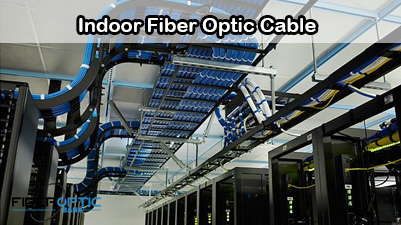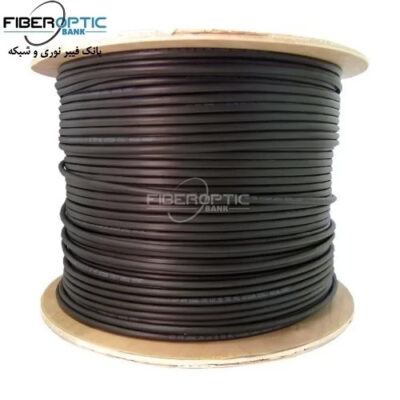Indoor Fiber Optic Cable
Fiber optic cables come in various types and can generally be classified as indoor and outdoor fiber optic cables according to their applications. A fiber optic cable comprises fibers, buffer tubes, ripcords, stiffeners, strength members, and an outer protective jacket. Choosing a suitable cable is essential to your cabling project. For instance, the choice will impact the installation cost of the fiber optic cable: how easy the cable is to install, its termination methods, e.g., mechanical splicing or fusion splicing, or terminated with a fiber optic connector, and what it will cost.
Fire prevention requirements
The main difference between indoor and outdoor fiber optic cables lies in the flame retardant and the water-blocking level. Compared to outdoor fiber optic cables, indoor fiber optic cable is less required to be tough enough. Instead, its flame retardancy grade is much more stringent, as it is used exclusively within buildings. This cable is not designed for harsh environments but is fire-resistant. It has to meet the local fire code provisions. You shall factor in fire prevention requirements that differ from each other worldwide. For example, The National Electrical Code(NEC) has specified eight levels of fire resistance for non-conductive and conductive cables. All indoor fiber optic cables should be marked and installed correctly as plenum, riser, or general-purpose indoor fiber optic cables. That’s why cables are classified into three types in terms of fire resistance: OFNP, OFNR, and general-purpose optical cable.
There’re three types of indoor fiber optic cables, i.e., plenum indoor fiber optic cable, riser indoor fiber optic cable, and LSZH indoor fiber optic cable (general-purpose optical cable).
Plenum indoor fiber optic cable(OFNP)
Plenum indoor fiber optic cable is the highest rating cable for flame retardancy, as it is used in plenum space.
All materials intended for use on wire and cables to be placed in plenum spaces are designed to meet rigorous fire safety test standards following NFPA 262 and outlined in NFPA 90A.
As previously mentioned, OFNP refers to “Optical Fiber, Non-conductive, Plenum.” Plenum cable is jacketed with a fire-retardant plastic jacket of either a low-smoke polyvinyl chloride (PVC) or a fluorinated ethylene polymer (FEP).
Riser indoor fiber optic cable(OFNR)
OFNR refers to “Optical Fiber, Non-conductive, Riser.” The difference between them lies in the fire resistance capability.
Riser Cable refers to the cable run between floors in non-plenum areas. The fire requirements on the riser cable are not as strict as the plenum cable. The plenum cable can always replace the riser cable, but the riser cable cannot replace the plenum cable in plenum spaces.
LSZH indoor fiber optic cable
LSZH stands for Low smoke zero halogen and is a material classification typically used for cable jacketing in the wire and cable industry.
These are designed for horizontal intrabuilding backbones with little smoke and zero-halogen requirements. This cable is classified as a general-purpose optical cable.
OFNP vs. OFNR vs. LSZH(general purpose cable)
The figure below compares these three types of fiber optic cables.
Figure 6: The comparison of flame retardancy between OFNP vs. OFNR vs. General purpose cable
Common installation ways of indoor fiber optic cable
Regarding these three types of indoor fiber optic cables, there’re also three installation methods, i.e., plenum cabling, riser cabling, and trays/ladder rack cabling.
Plenum cabling
This method applies to the plenum cable deployed above drop ceilings or under raised floors. It’s much easy as light-weighted panels are fixed by metal frames or grids attached to the ceiling. Only fiber optic cable management tools, such as trays, J-hooks, and cable ties, are needed to keep the cabling in good order.
Riser cabling
Riser cables need to be supported during pulling, like using cable ties in a wiring closet. Also, begin the installation from the top, not pulling from the opposite directions.
Trays/ladder rack cabling
Trays/ladder racks are preferred by large hi-tech data centers to efficiently and effectively organize the cabling. They can be placed under ceilings, floors, riser shafts, etc. Better avoid as much tension, crushing, and bending as possible.
Source: blog.teleweaver
Related products...
fiber-optic-cable
fiber-optic-cable
fiber-optic-cable
DRAKA Fiber optic cable 12 core,multi mode, In/Out LSOH, MM 50
















[ratings]